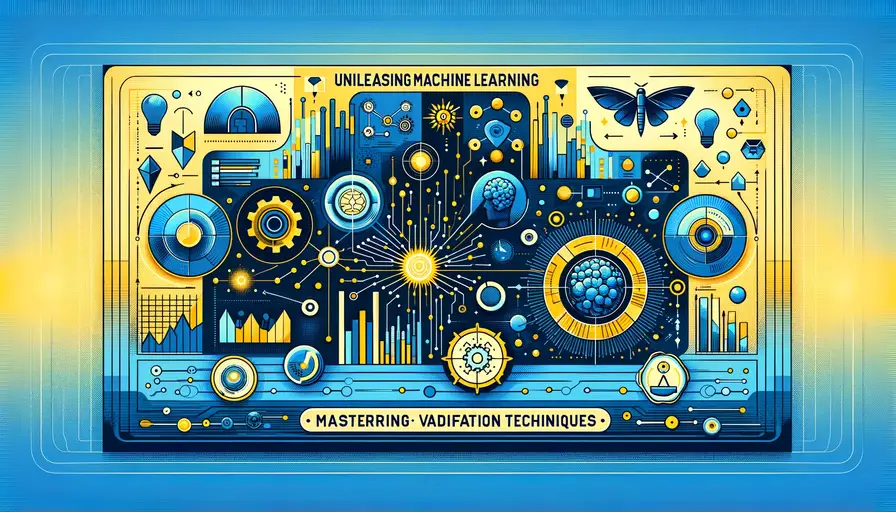
Scikit-Learn: A Python Machine Learning Library

Machine learning has become an essential tool in today's data-driven world, enabling businesses and researchers to make informed decisions. One of the most popular and accessible libraries for implementing machine learning algorithms in Python is scikit-learn. This article aims to provide a comprehensive introduction to scikit-learn, covering its features, capabilities, and practical applications. By the end, you'll have a solid foundation for using scikit-learn to build your own machine learning models.
Fundamentals of Scikit-Learn
Key Features of Scikit-Learn
Scikit-learn is a versatile and powerful library designed to streamline the process of implementing machine learning algorithms. It offers a wide range of tools for various tasks, including classification, regression, clustering, and dimensionality reduction. One of the main advantages of scikit-learn is its user-friendly API, which makes it accessible even to those with limited programming experience.
Another standout feature of scikit-learn is its compatibility with other scientific Python libraries, such as NumPy and pandas. This integration allows for seamless data manipulation and analysis, facilitating a smoother workflow. Additionally, scikit-learn provides comprehensive documentation and a wealth of tutorials, enabling users to quickly get up to speed with the library's capabilities.
The library is also highly optimized for performance, thanks to its use of efficient algorithms and data structures. This ensures that even large datasets can be processed quickly and efficiently. Moreover, scikit-learn is continuously updated and maintained by a dedicated community of developers, ensuring that it remains at the cutting edge of machine learning research and practice.
 Support Vector Machines for Machine Learning
Support Vector Machines for Machine LearningInstalling Scikit-Learn
Before diving into the practical applications of scikit-learn, you need to install the library on your system. The installation process is straightforward and can be done using the following command:
pip install scikit-learnThis command will automatically download and install the latest version of scikit-learn along with its dependencies. If you are using Anaconda, you can install scikit-learn by running:
conda install scikit-learnAfter installation, you can verify that scikit-learn is correctly installed by importing it in a Python script or interactive session. Simply run the following command:
import sklearn
print(sklearn.__version__)This will print the installed version of scikit-learn, confirming that the installation was successful. With scikit-learn installed, you're ready to start exploring its features and capabilities.
 Particle Swarm Optimization
Particle Swarm OptimizationData Preprocessing in Scikit-Learn
Effective data preprocessing is crucial for building accurate and reliable machine learning models. Scikit-learn offers a variety of tools for transforming raw data into a format suitable for analysis. These tools include functions for handling missing values, scaling numerical features, and encoding categorical variables.
One of the most commonly used preprocessing techniques is standardization, which involves scaling features to have a mean of zero and a standard deviation of one. This can be achieved using the StandardScaler class in scikit-learn. Here is an example:
from sklearn.preprocessing import StandardScaler
import numpy as np
# Sample data
data = np.array([[1, 2, 3], [4, 5, 6], [7, 8, 9]])
# Standardizing the data
scaler = StandardScaler()
scaled_data = scaler.fit_transform(data)
print(scaled_data)This code demonstrates how to standardize a simple dataset using scikit-learn. By applying standardization, you can ensure that all features contribute equally to the model, preventing any single feature from dominating due to its scale.
Building Machine Learning Models
Classification with Scikit-Learn
Classification is a fundamental task in machine learning, involving the prediction of categorical labels based on input features. Scikit-learn provides a variety of classification algorithms, including logistic regression, decision trees, and support vector machines. To illustrate the process, let's consider a simple example using the Iris dataset, a classic dataset in machine learning.
 What is Long Short-Term Memory?
What is Long Short-Term Memory?First, we'll load the dataset and split it into training and testing sets:
from sklearn.datasets import load_iris
from sklearn.model_selection import train_test_split
# Load the Iris dataset
iris = load_iris()
X = iris.data
y = iris.target
# Split the data into training and testing sets
X_train, X_test, y_train, y_test = train_test_split(X, y, test_size=0.2, random_state=42)Next, we'll train a logistic regression model on the training data and evaluate its performance on the testing data:
from sklearn.linear_model import LogisticRegression
from sklearn.metrics import accuracy_score
# Train a logistic regression model
model = LogisticRegression(max_iter=200)
model.fit(X_train, y_train)
# Make predictions on the testing data
y_pred = model.predict(X_test)
# Evaluate the model's accuracy
accuracy = accuracy_score(y_test, y_pred)
print(f"Accuracy: {accuracy}")This example demonstrates how to use scikit-learn to build and evaluate a classification model. The logistic regression model achieves an accuracy score, indicating how well it performs on the testing data.
Regression with Scikit-Learn
Regression is another essential task in machine learning, used for predicting continuous values based on input features. Scikit-learn offers a range of regression algorithms, including linear regression, ridge regression, and decision trees. Let's explore a simple example using linear regression.
 Choosing the Right ML Classification Algorithm: Decision Tree
Choosing the Right ML Classification Algorithm: Decision TreeWe'll start by generating a synthetic dataset and splitting it into training and testing sets:
from sklearn.datasets import make_regression
# Generate a synthetic dataset
X, y = make_regression(n_samples=100, n_features=1, noise=10, random_state=42)
# Split the data into training and testing sets
X_train, X_test, y_train, y_test = train_test_split(X, y, test_size=0.2, random_state=42)Next, we'll train a linear regression model on the training data and evaluate its performance on the testing data:
from sklearn.linear_model import LinearRegression
from sklearn.metrics import mean_squared_error
# Train a linear regression model
model = LinearRegression()
model.fit(X_train, y_train)
# Make predictions on the testing data
y_pred = model.predict(X_test)
# Evaluate the model's mean squared error
mse = mean_squared_error(y_test, y_pred)
print(f"Mean Squared Error: {mse}")This example illustrates how to use scikit-learn to build and evaluate a regression model. The linear regression model's mean squared error provides a measure of how well it fits the data.
Clustering with Scikit-Learn
Clustering is an unsupervised learning task that involves grouping similar data points together. Scikit-learn offers various clustering algorithms, including k-means, hierarchical clustering, and DBSCAN. Let's explore an example using k-means clustering.
 Normalization Techniques for Deep Learning Regression Models
Normalization Techniques for Deep Learning Regression ModelsWe'll generate a synthetic dataset and apply k-means clustering to group the data points:
from sklearn.datasets import make_blobs
from sklearn.cluster import KMeans
# Generate a synthetic dataset
X, _ = make_blobs(n_samples=100, centers=3, random_state=42)
# Apply k-means clustering
kmeans = KMeans(n_clusters=3)
kmeans.fit(X)
# Get the cluster labels
labels = kmeans.labels_
print(labels)This example demonstrates how to use scikit-learn to perform k-means clustering. The resulting cluster labels indicate which data points belong to each cluster.
Advanced Topics in Scikit-Learn
Model Evaluation and Validation
Evaluating and validating machine learning models is crucial for ensuring their performance and generalizability. Scikit-learn provides a variety of tools for model evaluation, including cross-validation, grid search, and various metrics.
Cross-validation is a technique for assessing how a model performs on different subsets of the data. It involves splitting the data into multiple folds and training the model on each fold, then averaging the results. Here is an example of using cross-validation with scikit-learn:
 XGBoost: A Powerful ML Model for Classification and Regression
XGBoost: A Powerful ML Model for Classification and Regressionfrom sklearn.model_selection import cross_val_score
# Perform cross-validation
scores = cross_val_score(model, X, y, cv=5)
print(f"Cross-Validation Scores: {scores}")
print(f"Mean Score: {scores.mean()}")Grid search is another powerful tool for optimizing hyperparameters. It systematically searches through a specified parameter grid to find the best combination of hyperparameters. Here is an example:
from sklearn.model_selection import GridSearchCV
# Define the parameter grid
param_grid = {'C': [0.1, 1, 10], 'solver': ['lbfgs', 'liblinear']}
# Perform grid search
grid_search = GridSearchCV(model, param_grid, cv=5)
grid_search.fit(X_train, y_train)
# Get the best parameters
best_params = grid_search.best_params_
print(f"Best Parameters: {best_params}")These techniques help ensure that your model is both accurate and generalizable, reducing the risk of overfitting or underfitting.
Dimensionality Reduction Techniques
Dimensionality reduction is a technique used to reduce the number of features in a dataset while preserving its essential structure. Scikit-learn offers several dimensionality reduction methods, including principal component analysis (PCA) and t-distributed stochastic neighbor embedding (t-SNE).
PCA is a widely used technique for reducing the dimensionality of data by projecting it onto a lower-dimensional subspace. Here is an example of using PCA with scikit-learn:
from sklearn.decomposition import PCA
# Perform PCA
pca = PCA(n_components=2)
X_reduced = pca.fit_transform(X)
print(X_reduced)t-SNE is another dimensionality reduction technique, particularly useful for visualizing high-dimensional data. Here is an example of using t-SNE with scikit-learn:
from sklearn.manifold import TSNE
# Perform t-SNE
tsne = TSNE(n_components=2)
X_embedded = tsne.fit_transform(X)
print(X_embedded)These techniques help simplify complex datasets, making them easier to analyze and visualize.
Pipelines and Feature Union
Scikit-learn provides a convenient way to streamline your machine learning workflow using pipelines. Pipelines allow you to chain together multiple preprocessing steps and a model, ensuring that the same transformations are applied consistently. Here is an example of using pipelines with scikit-learn:
from sklearn.pipeline import Pipeline
# Define a pipeline
pipeline = Pipeline([
('scaler', StandardScaler()),
('model', LogisticRegression())
])
# Train the pipeline
pipeline.fit(X_train, y_train)
# Make predictions
y_pred = pipeline.predict(X_test)
print(y_pred)Feature union is another powerful tool that allows you to combine multiple feature extraction methods. This can be particularly useful when dealing with heterogeneous data. Here is an example:
from sklearn.pipeline import FeatureUnion
from sklearn.decomposition import PCA
from sklearn.feature_selection import SelectKBest
# Define a feature union
feature_union = FeatureUnion([
('pca', PCA(n_components=2)),
('kbest', SelectKBest(k=2))
])
# Transform the data
X_combined = feature_union.fit_transform(X)
print(X_combined)These tools help streamline your workflow, making it easier to build and evaluate complex machine learning models.
Practical Applications of Scikit-Learn
Predictive Maintenance
Predictive maintenance involves using machine learning to predict when equipment is likely to fail, allowing for timely maintenance and reducing downtime. Scikit-learn can be used to build predictive maintenance models by analyzing historical data and identifying patterns that precede equipment failures.
For example, you can use scikit-learn to train a classification model that predicts whether a machine is likely to fail within a certain timeframe based on sensor readings. By continuously monitoring the equipment and updating the model, you can ensure that maintenance is performed only when necessary, optimizing costs and minimizing disruptions.
Customer Segmentation
Customer segmentation is a crucial task in marketing, involving the division of customers into distinct groups based on their behavior and characteristics. Scikit-learn can be used to perform customer segmentation using clustering algorithms, such as k-means.
By analyzing customer data, such as purchase history and demographic information, you can identify distinct customer segments and tailor your marketing strategies accordingly. This can help you target your marketing efforts more effectively, increasing customer satisfaction and boosting sales.
Fraud Detection
Fraud detection is a critical application of machine learning, involving the identification of fraudulent transactions and activities. Scikit-learn can be used to build fraud detection models by analyzing transaction data and identifying patterns indicative of fraud.
For example, you can use scikit-learn to train a classification model that predicts whether a transaction is likely to be fraudulent based on various features, such as transaction amount and location. By continuously monitoring transactions and updating the model, you can detect and prevent fraud in real-time, protecting your business and customers.
Scikit-learn is a powerful and versatile library for implementing machine learning algorithms in Python. Its user-friendly API, compatibility with other scientific libraries, and comprehensive documentation make it an excellent choice for both beginners and experienced practitioners. By mastering scikit-learn, you can unlock the full potential of machine learning and apply it to a wide range of practical applications.
If you want to read more articles similar to Scikit-Learn: A Python Machine Learning Library, you can visit the Algorithms category.






You Must Read